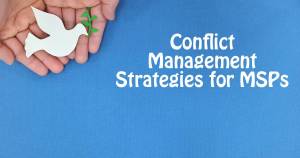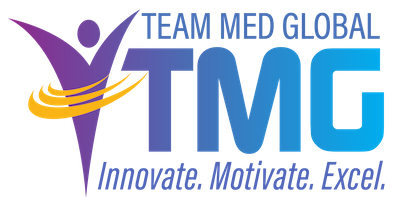 As Medical Services Professionals (MSPs), we often navigate complex interactions and sensitive situations. That’s why conflict management is a key skill area in TMG’s EMSP Core Competency Model, which serves as a blueprint for MSP excellence. Here’s a guide to help MSPs approach workplace conflicts with confidence and tact.
As Medical Services Professionals (MSPs), we often navigate complex interactions and sensitive situations. That’s why conflict management is a key skill area in TMG’s EMSP Core Competency Model, which serves as a blueprint for MSP excellence. Here’s a guide to help MSPs approach workplace conflicts with confidence and tact.
Understanding Conflict
Conflict in the workplace arises from differences in values, motivations, perceptions, or desires. It’s a natural part of any work environment, particularly in fields like healthcare where the stakes are high and decisions can significantly impact patient care.
Identifying the Root Causes
For MSPs, conflicts may stem from varied interpretations of policies, competition for resources, communication breakdowns, or the stress of ensuring compliance with regulatory and accreditation requirements. Recognizing these triggers is the first step towards resolution.
Strategies for Effective Conflict Management
Address Issues Promptly: Time can escalate conflicts, turning minor misunderstandings into significant disputes. Address conflicts as soon as they arise to prevent them from worsening.
Listen Actively: Listening is not just about hearing words; it’s about understanding the underlying emotions and perspectives. Encourage all parties to express their views fully, without interruption.
Communicate Clearly: Use “I” statements to express your thoughts and feelings without placing blame. This can prevent the other person from becoming defensive.
Seek to Understand: Try to understand the other person’s point of view. This doesn’t mean you have to agree, but acknowledging their perspective can pave the way for a collaborative solution.
Focus on Interests, Not Positions: Dig deeper to find out what the parties truly need, not just what they say they want. By identifying the underlying interests, you can address the root cause of the conflict.
Find Common Ground: Despite differences, there’s often common ground to be found. Identifying shared goals or values can create a foundation for agreement.
Embrace Diverse Perspectives: MSPs work with a variety of stakeholders. Valuing diverse perspectives can lead to innovative solutions that may not have been considered otherwise.
Develop Solutions Together: Involve all parties in creating a solution. This encourages buy-in and commitment to the outcome.
Agree on a Way Forward: Once a solution is reached, agree on the actions each person will take. Clear steps and timelines ensure accountability.
Follow Up: After implementing solutions, check back with those involved to ensure the conflict has not reemerged and that the agreed-upon actions are being followed.
Preventing Future Conflicts
While not all conflict can be avoided, MSPs can take proactive steps to minimize potential disputes:
- Establish clear policies and procedures.
- Maintain open lines of communication.
- Build a team culture that values respect and collaboration.
- Provide training on conflict resolution and communication skills.
The Role of Leadership
Leadership plays a critical role in conflict management. By setting an example of effective communication and problem-solving, leaders can create an environment where conflicts are less likely to arise and more easily resolved when they do.
Conflict management is a dynamic and ongoing process. By understanding the nature of conflicts and employing effective strategies to address them, MSPs can maintain a harmonious workplace. Remember, the goal isn’t to eliminate conflicts entirely but to manage them in a way that they become opportunities for growth and improvement.
